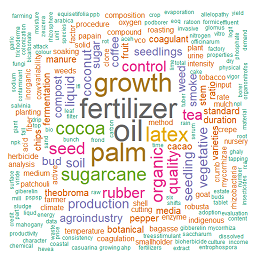Respons Pertumbuhan Bibit Budset Tebu (Saccharum officinarum L.) Varietas VMC 86-550 pada Beberapa Konsentrasi dan Frekuensi Aplikasi Pupuk Organik Cair (POC) Urine Sapi
DOI:
https://doi.org/10.25181/jaip.v11i3.3165Keywords:
cow urine, liquid organic fertilizer, single bud planting, sugarcaneAbstract
Sugarcane (Saccharum officinarum L.) is an important plantation commodity as the main raw material for producing sugar consumed in Indonesia. One of the varieties cultivated is VMC 86-550, but one of the technical obstacles to its cultivation is the slow and non-uniform growth of the seeds. Therefore, one effort to maximize the growth of budset seed varieties requires proper nutrition and contains growth-promoting hormones. Therefore, this study aims to determine the response of giving liquid organic fertilizer (LOF) from cow urine to the growth of VMC 86-550 sugarcane seedlings using the budset method. To find out the purpose, this study used a factorial randomized block design with a concentration factor of LOF of cow urine consisting of five levels (0%, 10%, 15%, 20%, and 25%). The second factor is the application frequency which consists of once every 2 weeks and once every 4 weeks, so there were 10 treatments and repeated three times. This study used a completely randomized factorial design and was analyzed using ANOVA if there was a significant influence followed by Duncan Multiple Range Test (DMRT) at a 5% level using SPSS 20 software. Observation variables included plant height, stem diameter, number of leaves, number of tillers, and root length of sugarcane seedlings up to 90 HST. The results showed that the addition of cow urine LOF had an effect on the growth of sugarcane seedlings, both from the concentration and frequency of application, but the combination of the two did not have a significant effect on all observation variables.Downloads
References
Ariesandy, W. (2014). Pengaruh kombinasi tanah dengan kompos daun sebagai campuran media tanam dan konsentrasi urin sapi terhadap pertumbuhan bibit kopi arabika (Coffea arabica L.) kultivar Lini S 795. Agric Sci Journal, 1(4), 8–17.
Asmono, S. L., uhammad Haqiqi, N., & Salim, A. (2023). The effect of mung bean sprout extract as a natural plant growth regulator on the growth of sugarcane budchip (Saccharum officinarum L.) seedlings. Mediagro, 19(1), 118–125.
Bari, Z. F., Bintoro, M., & Sulistyono, N. B. E. (2017). Pengaruh konsentrasi dan interval pemberian urin sapi fermentasi terhadap pertumbuhan bibit tebu (Saccharum officinarum L.) metode single bud planting (SBP). Agriprima: Journal of Applied Agricultural Sciences, 1(2), 134–142. https://doi.org/10.25047/agriprima.v1i2.40
Brilliyana, Y. M., Yamika, W. S. D., & Wicaksono, K. P. W. (2017). Pengaruh berbagai media tanam terhadap pembibitan bud chip tanaman tebu (Saccharum officinarum L.) varietas BL. Jurnal Produksi Tanaman, 5(2), 355–362.
Hafizah, N. (2014). Pertumbuhan stek mawar (Rosa damascena Mill.) pada waktu perendaman dalam larutan urine sapi. Ziraa’ah, 39(3), 129–135.
Jain, R., Solomon, S., Shrivastava, A. K., & Chandra, A. (2010). Sugarcane bud chips: A promising seed material. Sugar Tech, 12, 67–69.
Lewenussa, A. (2009). Pengaruh Mikoriza dan Bio Organik terhadap Pertumbuhan Bibit Cananga odorata (Lamk) Hook. Fet & Thoms [Unpublished undergraduate thesis]. Institut Pertanian Bogor.
Liu, Y., Gu, D., Ding, Y., Wang, Q., Li, G., & Wang, S. (2011). The relationship between nitrogen, auxin and cytokinin in the growth regulation of rice (Oryza sativa L.) tiller buds. Australian Journal of Crop Science, 5(8), 1019–1026.
Majda, M., & Robert, S. (2018). The role of auxin in cell wall expansion. International Journal of Molecular Sciences, 19(4). https://doi.org/10.3390/ijms19040951
Mastur, Syafaruddin, & Syakir, M. (2015). Peran dan pengelolaan hara nitrogen pada tanaman tebu untuk peningkatan produktivitas tebu. Perspektif: Review Penelitian Tanaman Industri, 14(2), 73–86.
Mohanty, M., & Nayak, P. (2021). Bud chip method of sugarcane planting: A review. J. Pharm. Innov, 10, 150–153.
Patar, H., Barus, A., & Irsal, I. (2015). Pengaruh konsentrasi zat pengatur tumbuh dan sumber bud chips terhadap pertumbuhan bibit tebu (Saccharum officinarum) di pottray. Jurnal Agroekoteknologi Universitas Sumatera Utara, 3(3), 105256.
Pratiwi, D., & Trikuntari. (2020). Analisis kinerja dan prospek komoditas gula. Analisis Dan Opini Perkebunan, 1(1), 1–10.
Pratiwi, Y. I., Nisak, F., & Gunawan, B. (2019). Peningkatan Manfaat Pupuk Organik Cair Urine Sapi: Teknologi Tepat Guna dalam Upaya Meningkatkan Produk Pertanian. Uwais Inspirasi Indonesia.
Priantyo. (2002). Urine sapi harapan petani non pestisida. Jurnal Sains Dan Teknologi, 10, 18–29.
Rahmah, A., Izzati, M., & Parman, S. (2014). Pengaruh pupuk organik cair berbahan dasar limbah sawi putih (Brassica chinensis L.) terhadap pertumbuhan tanaman jagung manis. Buletin Anatomi dan Fisiologi, 22(1), 65–71.
Rosniawaty, S., Sudirja, R., & Afrianto, H. (2015). Pemanfaatan urin kelinci dan urin sapi sebagai alternatif pupuk organik cair pada pembibitan kakao (Theobroma cacao L.). Kultivasi, 14(1), 32–36. https://doi.org/10.24198/kultivasi.v14i1.12094
Sapri, S., & Febrialdi, A. (2021). Pengaruh jumlah ruas stek terhadap pertumbuhan bibit kopi robusta (Coffea canephora). Jurnal Sains Agro, 6(2), 86–98.
Suprijadji, G., & Prawoto, A. A. (1992). Kandungan hormon dalam air seni beberapa jenis ternak. Pusat Penelitian Perkebunan Jember. Pelita Perkebunan, 7(4), 79–84.
Yuniarti, N., Heryati, Y., & Rostiwati, T. (2004). Pengaruh media tanam dan frekuensi pemupukan kompos terhadap pertumbuhan dan mutu bibit damar (Agathis loranthifolia Salisb.). Jurnal Agronomi, 9(2), 59–66.
Downloads
Published
How to Cite
Issue
Section
License
Copyright (c) 2023 Sepdian Luri Asmono, Wahyuning Putri Ramadhani

This work is licensed under a Creative Commons Attribution-ShareAlike 4.0 International License.
Authors who publish with Jurnal Agro Industri Perkebunan agree to the following terms:
Authors retain copyright and grant the Jurnal Agro Industri Perkebunan right of first publication with the work simultaneously licensed under a Creative Commons Attribution License (CC BY-SA 4.0) that allows others to share (copy and redistribute the material in any medium or format) and adapt (remix, transform, and build upon the material for any purpose, even commercially) with an acknowledgment of the work's authorship and initial publication in Jurnal Agro Industri Perkebunan.
Authors are able to enter into separate, additional contractual arrangements for the non-exclusive distribution of the journal's published version of the work (e.g., post it to an institutional repository or publish it in a book), with an acknowledgment of its initial publication in Jurnal Agro Industri Perkebunan. Authors are permitted and encouraged to post their work online (e.g., in institutional repositories or on their website) prior to and during the submission process, as it can lead to productive exchanges, as well as earlier and greater citation of published work.


























